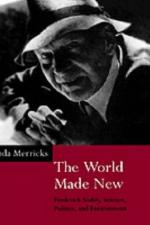|
This section contains 1,728 words (approx. 6 pages at 300 words per page) |

|
World of Chemistry on Frederick Soddy
Frederick Soddy's major contribution to science was his discovery of the existence of isotopes in 1913, an accomplishment for which he was awarded the 1921 Nobel Prize in chemistry. That discovery came as the result of extensive research on the radioactive elements carried out first with British physicist Ernest Rutherford at McGill University and later with British chemist Sir William Ramsay at London University. Among Soddy's contributions during this period was his recognition of the relationship between helium gas and alpha particle emanations--the latter being the ejection of a type of nuclear particle during a radioactive transformation--as well as his enunciation of the disintegration law of radioactive elements (which states that when a substance decays, it emits a particle and is transformed into a totally new substance). Soddy's most important work was carried out while he was lecturer in physical chemistry at the University of Glasgow between 1904 and 1919. Later in...
|
This section contains 1,728 words (approx. 6 pages at 300 words per page) |

|


